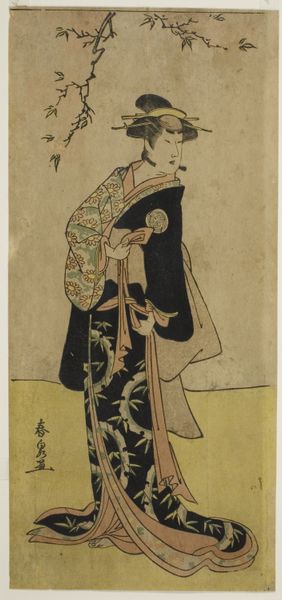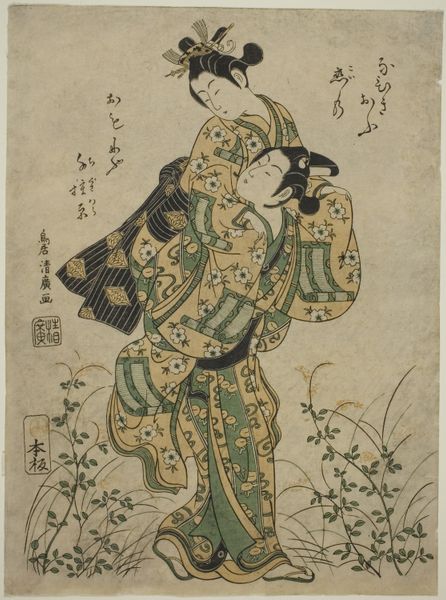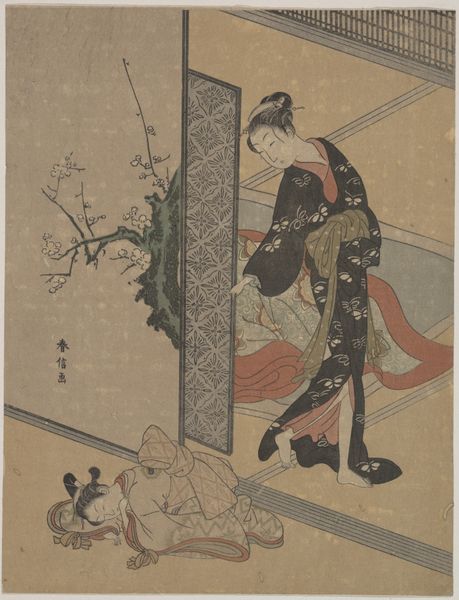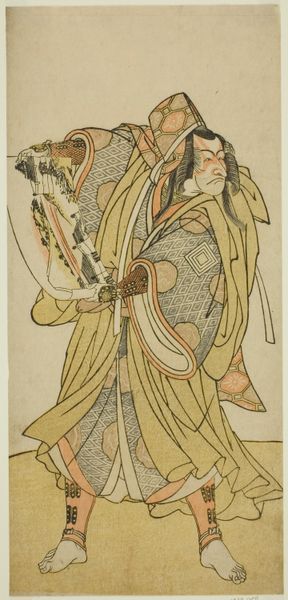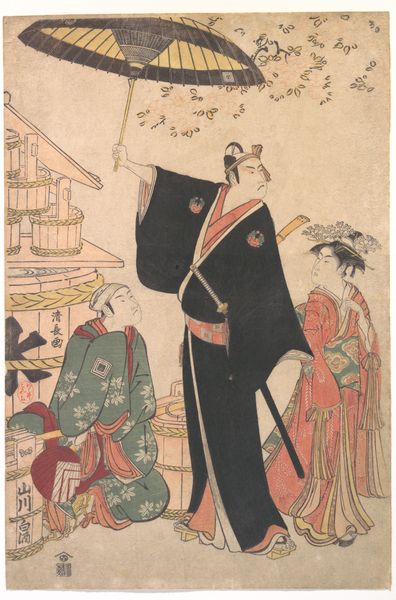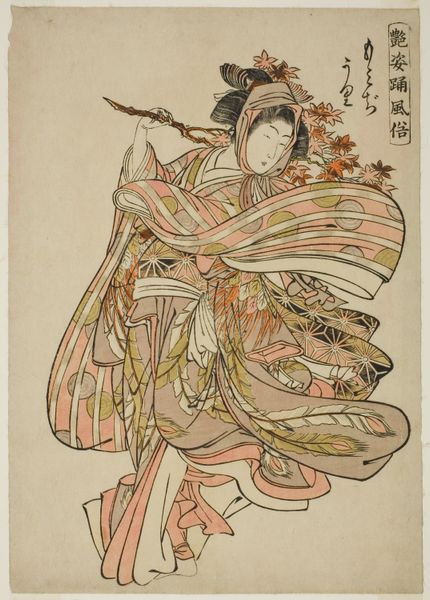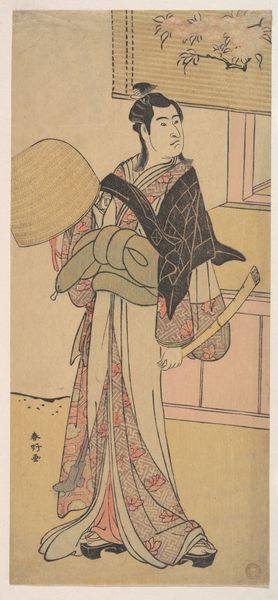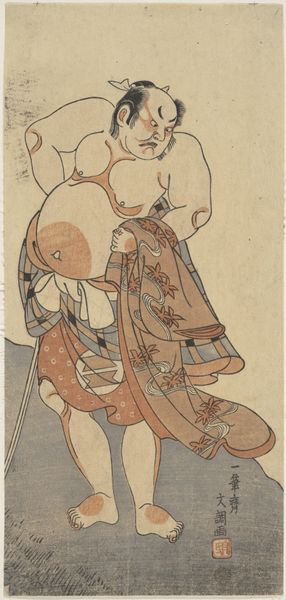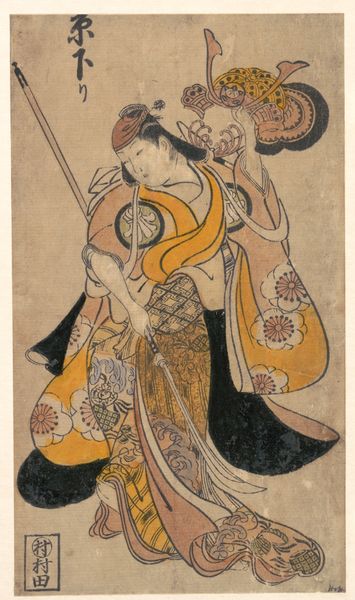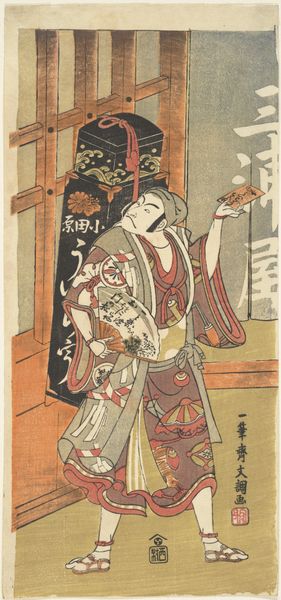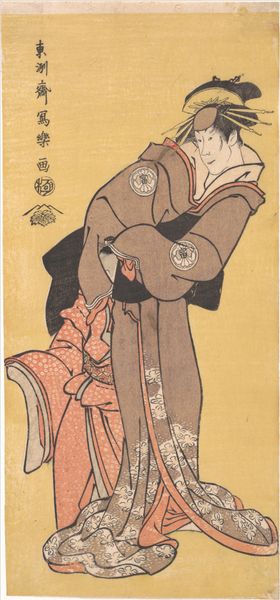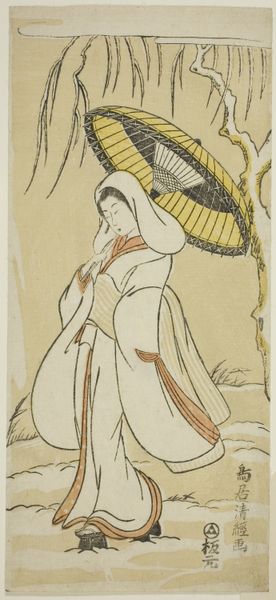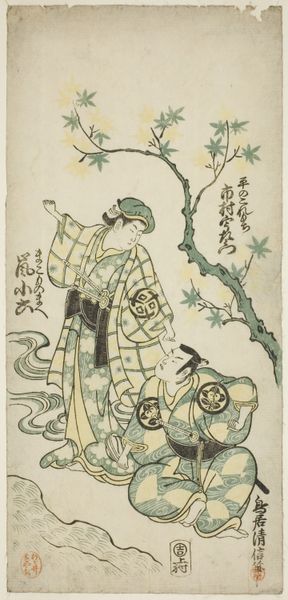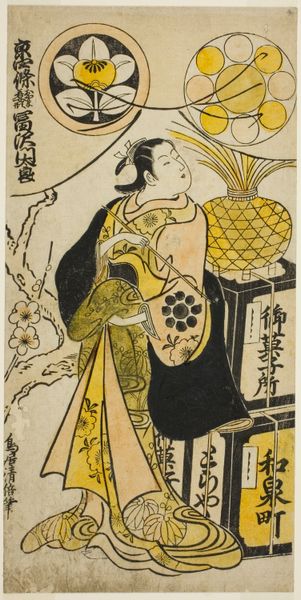
The Actor Ichimura Uzaemon IX as a Monkey in the Play Mitsu Ningyo Yayoi no Hinagata, Performed at the Nakamura Theater in the Second Month, 1785 c. 1785
0:00
0:00
print, woodblock-print
#
portrait
# print
#
asian-art
#
ukiyo-e
#
figuration
#
woodblock-print
#
history-painting
Dimensions: 31.8 × 14.9 cm (12 1/2 × 5 7/8 in.)
Copyright: Public Domain
Editor: So, here we have Katsukawa Shunko's woodblock print from 1785, titled "The Actor Ichimura Uzaemon IX as a Monkey…" It’s quite striking – the level of detail in the monkey's fur and the actor's costume is incredible. The figure’s dressed like he’s about to perform for the Shogun. What stands out to you the most in this work? Curator: For me, it's the exploration of labor inherent in the printmaking process. The material realities of woodblock carving – the specific tools used, the artisan’s skill, the very paper it's printed on – speak to the networks of production and consumption within Edo-period Japan. Editor: That's interesting. I hadn't considered that. Curator: And how that system elevated this "low" form, Ukiyo-e, depicting actors from popular theater, to a collectable item, which arguably challenged hierarchies of artistic production. Consider also how the mass production of such prints allowed wider access to art among different social strata. What are your thoughts on the socio-economic implications of the work's materials? Editor: It almost feels like a form of democratized art, given that woodblock printing made it more accessible to a broader audience. But at the same time, that increased production was likely supported by underpaid artisans, wasn't it? There's a tension there. Curator: Exactly! It brings up vital questions. Were the artisans considered skilled labor, craftspeople or something in between? By examining the materials and production techniques, we confront uncomfortable questions about labor and its devaluation. It’s not just a portrait; it’s a product of a particular economic moment. Editor: I'm beginning to appreciate that. Viewing the art through that perspective brings an additional dimension. Curator: Precisely. I’ve certainly been rethinking some assumptions. It's not enough just to admire the aesthetic; we have to unpack the means by which it was created.
Comments
No comments
Be the first to comment and join the conversation on the ultimate creative platform.
